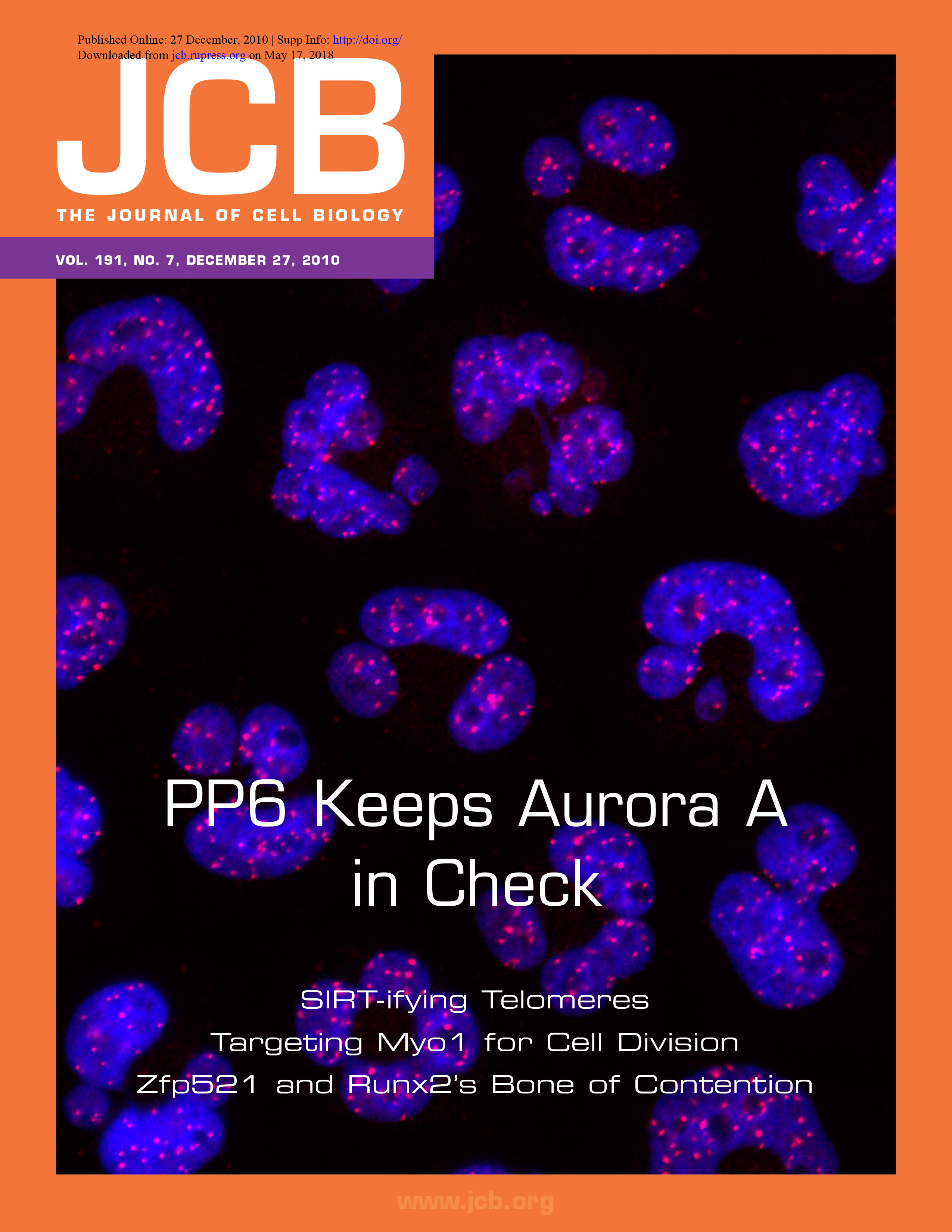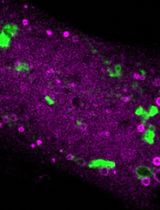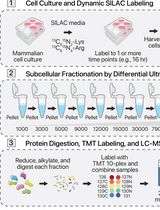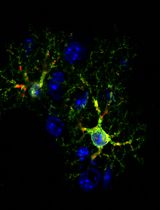- EN - English
- CN - 中文
Transmission Electron Microscopy for Analysis of Mitochondria in Mouse Skeletal Muscle
使用透射电子显微镜技术分析小鼠骨骼肌线粒体
发布: 2018年05月20日第8卷第10期 DOI: 10.21769/BioProtoc.2455 浏览次数: 19339
评审: Antoine de MorreeSesha Lakshmi Arathi PaluriAnonymous reviewer(s)
Abstract
Skeletal muscle is the most abundant tissue in the human body and regulates a variety of functions including locomotion and whole-body metabolism. Skeletal muscle has a plethora of mitochondria, the organelles that are essential for aerobic generation of ATP which provides the chemical energy to fuel vital functions such as contraction. The number of mitochondria in skeletal muscle and their function decline with normal aging and in various neuromuscular diseases and in catabolic conditions such as cancer, starvation, denervation, and immobilization. Moreover, compromised mitochondrial function is also associated with metabolic disorders including type 2 diabetes mellitus. It is now clear that maintaining mitochondrial content and function in skeletal muscle is vital for sustained health throughout the lifespan. While a number of staining methods are available to study mitochondria, transmission electron microscopy (TEM) is still the most important method to study mitochondrial structure and health in skeletal muscle. It provides critical information about mitochondrial content, cristae density, organization, formation of autophagosomes, and any other abnormalities commonly observed in various disease conditions. In this article, we describe a detailed protocol for sample preparation and analysis of mouse skeletal muscle mitochondria by TEM.
Keywords: Transmission electron microscopy (透射电子显微镜技术)Background
Skeletal muscle is a highly plastic tissue that undergoes morphological and metabolic adaptations in response to a number of extracellular cues. A number of perturbations including resistance or endurance exercise stimulates mitochondrial biogenesis leading to increased metabolic capacity and resistance to fatigue (Li et al., 2008; Sandri, 2008). By contrast, during aging, inactivity, and in many catabolic disease states, skeletal muscle mitochondrial number and function decline, leading to increased fatigability and insulin resistance (Sandri, 2008). An accumulation of dysfunctional mitochondria may also result in progressive reactive oxygen species-induced damage, producing a further impairment of oxidative capacity in skeletal muscle (Bonnard et al., 2008).
Mitochondria exist as a reticular membrane network that is located in different subcellular compartments in skeletal muscle. The subsarcolemmal (SS) mitochondria, account for 10-15% of the mitochondrial volume and lie directly beneath the sarcolemmal membrane, whereas the intermyofibrillar (IMF) mitochondria are located in close contact with the myofibril (Takahashi and Hood, 1996). Mitochondria are double membrane structures containing an intermembrane space between the outer and inner membranes as well as the inner matrix compartment, where most of the metabolic processes take place. The inner membrane is highly folded, forming so-called cristae, to accommodate its large surface area. The five complexes that make up the respiratory chain where oxidative phosphorylation takes place are embedded within the inner mitochondrial membrane. In this process, a proton gradient across the inner membrane is coupled to ATP synthesis at complex V (Peterson et al., 2012). In addition to producing ATP for cross-bridge cycling between actin and myosin, mitochondria are a source of free radicals which regulate skeletal muscle physiology (Peterson et al., 2012).
Transmission electron microscopy (TEM) is a powerful technique for ultrastructural studies (Watson, 1958). TEM has been very useful in studying mitochondrial structure in skeletal muscle in both physiological and pathological conditions (Picard et al., 2013). For example, TEM can provide information about mitochondrial content, organization, cristae structure, and vacuolization as observed in some neuromuscular disorders such as Amyotrophic lateral sclerosis (Picard et al., 2013). In many muscle wasting conditions, mitochondrial content is reduced through autophagy, also known as mitophagy. In this regard, TEM has been found to be an important approach to study autophagosome formation (Sandri, 2008). We have developed an efficient protocol that can be easily adapted in any laboratory to study the ultrastructure of mouse mitochondria in skeletal muscle by TEM (Paul et al., 2010; Hindi et al., 2014 and 2018). In the following sections, we provide a step-wise protocol for sample preparation and analysis of SS and IMF mitochondria in skeletal muscle. A similar protocol can be used for studying other organelles in skeletal muscle by TEM as well.
Materials and Reagents
- Glass specimen vials (Electron Microscopy Sciences, catalog number: 72630-05 )
- Razor blades, Double Edge Coated, Washed Version (Electron Microscopy Sciences, Personna, catalog number: 72000-WA )
- Transfer pipette (Fisher Scientific, catalog number: 13-711-9BM )
- Nitrile gloves
- Glass strips, ultramicrotomy grade, 6.4 x 25 x 400 mm (Electron microscopy sciences, catalog number: 71012 )
- Glass slides (Fisher Scientific, catalog number: 12-550-15 )
- Syringes 1 ml (BD, catalog number: 329652 )
- Syringes 30 ml (BD, catalog number: 302833 )
- 0.22 μm syringe filter (Merck, catalog number: SLGV033RS )
- Conical centrifuge tube, 50 ml (VWR, catalog number: 21008-169 )
- Conical centrifuge tube, 15 ml (VWR, catalog number: 21008-089 )
- Non-sterile urine specimen container (Electron Microscopy Sciences, catalog number: 64231-10 )
- Filter paper, Qualitative Grade 1 Circles (GE Healthcare, Whatman, catalog number: 1001-090 )
- Glass stirring rod (United Scientific Supplies, catalog number: GSR012 )
- Wood applicators (Electron microscopy Sciences, catalog number: 72300 )
- Flat, silicone embedding mold (Electron Microscopy Sciences, catalog number: 70900 )
- Glass knife boat, 6.4 mm (Electron Microscopy Sciences, catalog number: 71007 )
- Glass knife box (Electron Microscopy Sciences, catalog number: 71010 )
- N95 respirator, with valve (VWR, catalog number: 89201-510 )
- Metal loop, perfect loop (Electron Microscopy Sciences, catalog number: 70944 )
- Grids, tabbed, copper, 200 mesh (Ted Pella, catalog number: 3HGC200 )
- Grid storage box, tabbed (Ted Pella, catalog number: 161 )
- Petri dish, glass, 100 x 20 mm (Corning, catalog number: 70165-102 )
- Glutaraldehyde, EM grade, 8% (Polysciences, catalog number: 00216-30 )
- Sodium phosphate monobasic monohydrate, NaH2PO4·H2O (Sigma-Aldrich, catalog number: S9638 )
- Sodium phosphate dibasic anhydrous, Na2HPO4 (Sigma-Aldrich, catalog number: S9763 )
- Osmium tetroxide, 10 x 1 g (Electron Microscopy Sciences, catalog number: 19110 )
- Ethanol, 200 Proof (Decon Labs, catalog number: 2701 )
- EMbed-812 kit, includes: EMbed-812, DDSA, NMA, and DMP-30 (Electron Microscopy Sciences, catalog number: 14120 )
- Sodium borate (MP Biomedicals, catalog number: 0219030980 )
- Toluidine blue O (Amresco, catalog number: 0672-25G )
- Uranyl acetate dihydrate powder (depleted) (Electron Microscopy Sciences, catalog number: 22400 )
- NaOH pellets (Amresco, catalog number: 0583-500G )
- Lead Nitrate, Pb(NO3)2 (Electron Microscopy Sciences, catalog number: 17900 )
- Sodium citrate, Na3(C6H5O7)·2H2O (Electron Microscopy Sciences, catalog number: 21140 )
- Propylene oxide, EM grade (Electron Microscopy Sciences, catalog number: 20401 )
- Dental wax (Electron Microscopy Sciences, catalog number: 72660 )
- 3% glutaraldehyde (see Recipe 1)
- 0.1 M sodium phosphate buffer pH 7.4 (see Recipe 2)
- 1% osmium tetroxide (see Recipe 3)
- Ethanol dilutions (see Recipe 4)
- Embedding media (see Recipe 5)
- 1% toluidine blue stain (see Recipe 6)
- 4% uranyl acetate stock (aq) (see Recipe 7)
- 1 N-NaOH (see Recipe 8)
- Reynold’s Lead Citrate (see Recipe 9)
Precautions/Hazards: As with any chemicals and reagents handled in the lab, users should be aware of how to use and manipulate them safely. Please refer to each chemical’s Material Safety Data Sheet (MSDS) for detailed information about precautions and hazards. Electron microscopy uses quite a few hazardous chemicals, such as: glutaraldehyde, osmium tetroxide, propylene oxide, uranyl acetate, lead citrate, and others. Please handle these chemicals using the proper personal protective equipment (PPE), ventilation conditions, and dispose of these chemicals in accordance with your institution’s Department of Environmental Health and Safety.
Equipment
- Amber, wide-mouth glass bottle, 125 ml (VWR, catalog number: 10861-846 )
- Clear, media bottle, 1 L (Corning, PYREX®, catalog number: 1399-1L )
- Graduated cylinder, 1,000 ml (VWR, catalog number: 65000-012 )
- Graduated cylinder, 25 ml (VWR, catalog number: 65000-002 )
- Magnetic stirring bar (VWR, catalog number: 58948-025 )
- General-Purpose Liquid-In-Glass Thermometer (VWR, catalog number: 89095-626 )
- Negative-action, curved self-closing tweezers (Electron Microscopy Sciences, catalog number: 72864-D )
- Eyelash manipulator (Electron Microscopy Sciences, catalog number: 71182 )
- 1,000 ml Glass Griffin beaker (VWR, catalog number: 10754-960 )
- 50 ml Glass Griffin beakers (VWR, catalog number: 10754-946 )
- Glass funnel, 100 mm (VWR, catalog number: 10546-048 )
- 50 ml volumetric flask (VWR, catalog number: 10123-996 )
- 100 ml volumetric flask, amber (VWR, catalog number: 10124-022 )
- -20 °C Freezer (VWR, catalog number: 97014-903 )
- 4 °C Refrigerator (VWR, catalog number: 14236-525 )
- Clinical rotator, variable speed tube rotator (Cole-Parmer, Stuart, catalog number: SB3 )
- Culture tube holder for clinical rotator, variable speed tube rotator, 12 mm offering a rolling action for tubes (Cole-Parmer, Stuart, catalog number: SB3/3 )
- pH meter, SymPhony B10P (VWR, catalog number: 89231-662 )
- pH probe, refillable, glass (VWR, catalog number: 89231-580 )
- Precision Balance, AV212C (Ohaus, out of production)
- Precision Balance (OHAUS, catalog number: 30122632 )
- Hotplate stirrer (Fisher Scientific, catalog number: SP88857200P )
- Vacuum oven (Electron Microscopy Sciences, catalog number: 63235-10 )
- Ultramicrotome (Reichert-Jung, model: Ultracut E , out of production, eBay or other second-hand markets)
- New ultramicrotome (Leica Microsystems, model: Leica EM UC7 )
- Glass knifemaker (LKB, model: LKB Type 7801B , out of production, eBay or other second-hand markets)
- New glass knifemaker, Leica EM KMR3 (Leica Microsystems,, catalog number: Leica EM KMR3 )
- Light microscope, Olympus CX31 (Olympus, catalog number: CX31 )
- Diamond knife, Diatome wet ultra 45°, 3.5 mm (Electron Microscopy Sciences, model: Diatome Ultra )
- Phillips CM10 transmission electron microscope retrofitted with a new digital camera (Phillips, catalog number: CM10 )
- High Definition CCD Camera for TEM retrofitted to Phillips CM10 scope (Advanced Microscopy Techniques, catalog number: BioSprint )
Procedure
文章信息
版权信息
© 2018 The Authors; exclusive licensee Bio-protocol LLC.
如何引用
Readers should cite both the Bio-protocol article and the original research article where this protocol was used:
- McMillan, J. D. and Eisenback, M. A. (2018). Transmission Electron Microscopy for Analysis of Mitochondria in Mouse Skeletal Muscle. Bio-protocol 8(10): e2455. DOI: 10.21769/BioProtoc.2455.
- Paul, P. K., Gupta, S. K., Bhatnagar, S., Panguluri, S. K., Darnay, B. G., Choi, Y. and Kumar, A. (2010). Targeted ablation of TRAF6 inhibits skeletal muscle wasting in mice. J Cell Biol 191(7): 1395-1411.
分类
细胞生物学 > 细胞结构 > 细胞器
发育生物学 > 形态建成 > 细胞结构
您对这篇实验方法有问题吗?
在此处发布您的问题,我们将邀请本文作者来回答。同时,我们会将您的问题发布到Bio-protocol Exchange,以便寻求社区成员的帮助。
Share
Bluesky
X
Copy link













